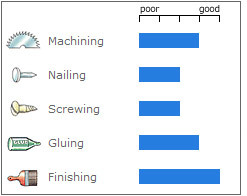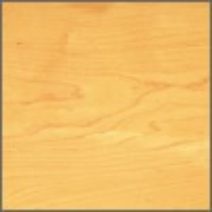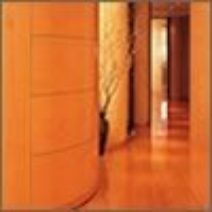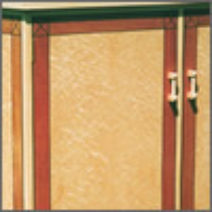
Hard Maple
American Hard Maple (Acer saccharum, A. nigrum)
Distribution
Eastern USA, principally Mid-Atlantic and Lake States. A cold weather tree favoring a more Northerly climate.
General Description
The sapwood is creamy white with a slight reddish brown tinge and the heartwood varies from light to dark reddish brown. The amount of darker brown heartwood can vary significantly according to growing region. Both sapwood and heartwood can contain pith fleck. The wood has a close fine texture and is generally straight grained, but it can also occur as 'curly', 'fiddleback', and 'birds-eye' figure.

Working Properties
Hard maple dries slowly with a large shrinkage, so it can be susceptible to movement in performance. Pre-boring is recommended when nailing and screwing. With care it machines well, turns well, glues satisfactorily, and can be stained and polished to an outstanding finish.
Physical Properties
The wood is hard and heavy with good strength properties, in particular its high resistance to abrasion and wear. It also has good steam bending properties.
- Specific Gravity: 0.63 (12% M.C.)
- Average Weight: 705 kg/m3 (12% M.C.)
- Average Volumetric Shrinkage: 11.9% (Green to 6% M.C.)
- Modulus of Elasticity: 12,618 MPa
- Hardness: 6450 N
* Values for A. saccharum
Durability
Rated as slightly or non-resistant to heartwood decay. Sapwood is liable to attack by furniture beetle. The heartwood is resistant to preservative treatment but the sapwood is permeable.
Availability
USA: Widely available.
Export: Widely available as lumber and veneer. The higher quality grades of lumber are available selected for white colour (sapwood) although this can limit availability. Figured maple (birds-eye, curly, fiddleback) is generally only available in commercial volumes as veneer.
Main Uses
Flooring, furniture, paneling, kitchen cabinets, worktops and table tops, interior joinery: stairs, handrails, moldings, and doors.




